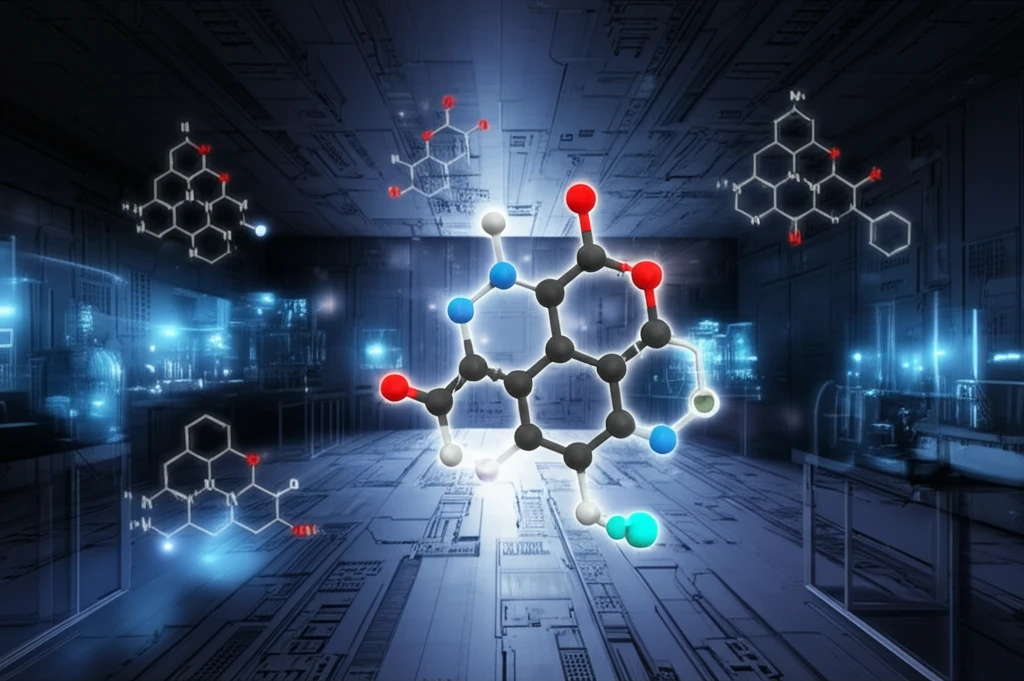
Unlock Pharmaceutical Secrets: How a 'Simple' Molecule Could Revolutionize Drug Design
"Dive into the groundbreaking research uncovering the hidden complexities of AHMP and its potential to transform how we develop and understand drug formulations."
In the ever-evolving world of pharmaceuticals, the quest for more effective and stable drug formulations is a constant pursuit. Active Pharmaceutical Ingredients (APIs), the very components that make our medications work, can exist in various forms, each possessing unique characteristics that impact their performance within the body. Traditionally, scientists have focused on neat forms, solvates, cocrystals, and salts to manipulate these properties. Now, a new frontier is emerging, one that delves into the complexities of molecular behavior, particularly tautomerism, to unlock unprecedented control over drug design.
Tautomerism, the ability of a molecule to exist in multiple structural forms that readily interconvert, adds a layer of intrigue to this field. Imagine a single molecule capable of morphing into different shapes, each with potentially different interactions and effects. This phenomenon can significantly influence a drug's solubility, stability, and even its bioavailability – the extent to which it can be absorbed and utilized by the body. Harnessing the power of tautomerism could lead to medications that are more effective, longer-lasting, and easier to manufacture.
Recent research has focused on a molecule called AHMP (2-amino-6-methyl-1,4-dihydropyrimidin-4-one) to uncover the hidden potential of tautomerism in drug design. Although seemingly simple, AHMP exhibits a surprising ability to exist in multiple tautomeric forms, offering a unique opportunity to explore how these forms can be manipulated to create novel drug formulations.
AHMP: Unlocking the Secrets of Molecular Versatility

The study, recently published in Crystal Growth & Design, explores the cocrystallization behavior of AHMP with a series of acids and imide coformers. Cocrystallization is a process where an API combines with another molecule (the coformer) to create a crystalline structure with enhanced properties. By carefully selecting coformers, scientists aim to fine-tune the API's characteristics, optimizing it for specific therapeutic applications. With AHMP, the added complexity of tautomerism further expands the possibilities.
- Eleven new solid forms of AHMP were created, demonstrating its versatility in forming different crystalline structures.
- Cocrystallization with acids resulted in salts, ionic cocrystals, and cocrystals, showcasing a range of interactions and properties.
- Two of the possible AHMP tautomers (A and B) were isolated, along with one of its cationic species, providing insights into their individual characteristics.
- DFT calculations were used to understand the molecular species obtained and the supramolecular motifs formed, providing a theoretical basis for the experimental findings.
Implications for the Future of Drug Development
This research provides valuable insights into the complex world of molecular interactions and highlights the potential of tautomerism in drug design. By understanding how different tautomeric forms influence the properties of APIs, scientists can develop more targeted and effective drug formulations. While AHMP may seem like a "simple" molecule, its behavior reveals a wealth of possibilities for creating novel medications with improved stability, solubility, and bioavailability. Further exploration of these concepts could pave the way for a new era of personalized medicine, where drugs are tailored to individual needs based on their unique molecular characteristics.
